Discover the Legendary Pickup Trucks of the 1940s
The 1940s was a decade that saw the resilience and rebirth of many pickup trucks and rugged icons. In this article we talk about some of them and why are they special to the automotive world. From the Ford F-Series to the Dodge Power Wagon, we discuss them all.
Published March 19, 2024

The decade of the 40s trucks was certainly a turning point in the history of pickup trucks. However, this pivotal decade saw these rugged workhorses emerge out of the shadows of the Great Depression and amidst the war-time chaos. The present article takes us backward in time revealing the deep meaning behind pickups of 1947, and the historical factors which influenced production and development thereof.
During this journey, we will explore the universe of the best trucks that typified this amazing age. Each of them was an expression of technological advancement, flexibility, and unbreakable resolve characteristic of the postwar United States automobile marketplace.
Historical Context
To understand the 1940s pickup trucks and value them fully one should start with the history and the environment in which they came from. At that time, the industry was also undergoing a transition. During the period leading up to and immediately after World War II, car manufacturers redirected some of their production resources into military-related goods thus leaving fewer resources for making civilians’ cars.
However, during these difficult times; innovation and development within the truck manufacturing industry blossomed. With the end of the war, the truck manufacturers geared themselves to serve the new needs of the postwar environment.
The Ford F-Series of 1948 (A Milestone in Truck History)
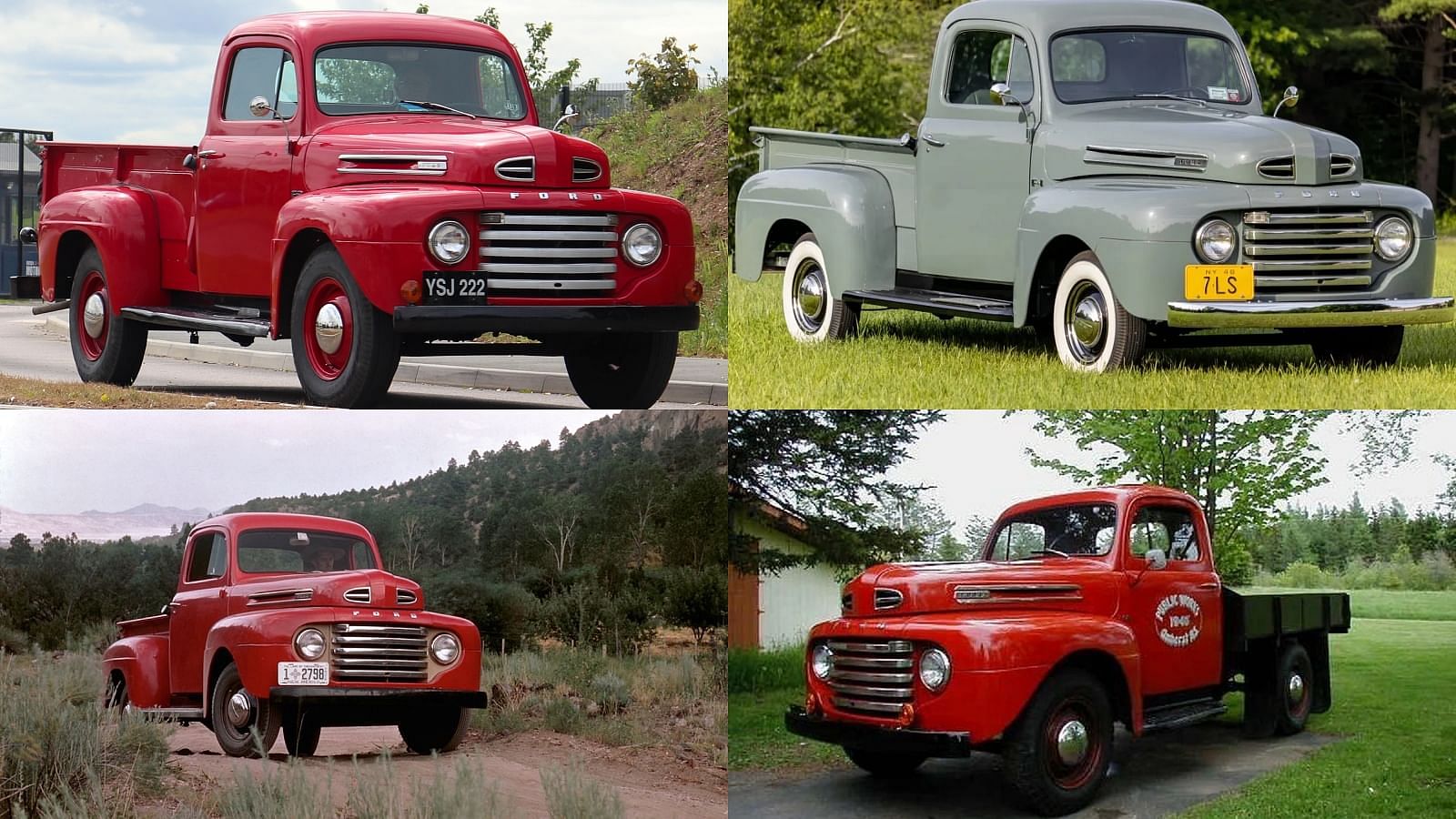
The Ford F-Series, launched in 1948, remains among the best-known and longest-standing car brand names in the motor vehicle sector. Its history can be traced back to the 20th century, but the late 40th is when it found its roots as the F-series.
|
Specifications |
Value |
|---|---|
|
Price |
Approximately $1,100 (1948) |
|
Powertrain |
Inline-6 Engine |
|
Horsepower |
95 HP |
|
Torque |
145 lb-ft |
|
Transmission |
3-speed manual |
|
0-60 mph |
23 seconds |
|
Top Speed (MPH) |
75 (approx) |
Modern styling, a more comfortable cabin, and a strong six-inline engine were available on the 1948 Ford F-Series. Its unique design and superior performance made it stand out from other trucks and won over fans of trucks. Surprisingly, one very captivating story about the 1948 Ford F-series was its enormous acceptance.
This boosted a post-war expansion of the private sector which demanded even more trucks. The growth of this sector was a response that led Ford to manufacture more and more F-Series thereby seizing an unforgettable place in American automotive history.
Dodge Power Wagon (1945) (From Battlefield to Main Street)
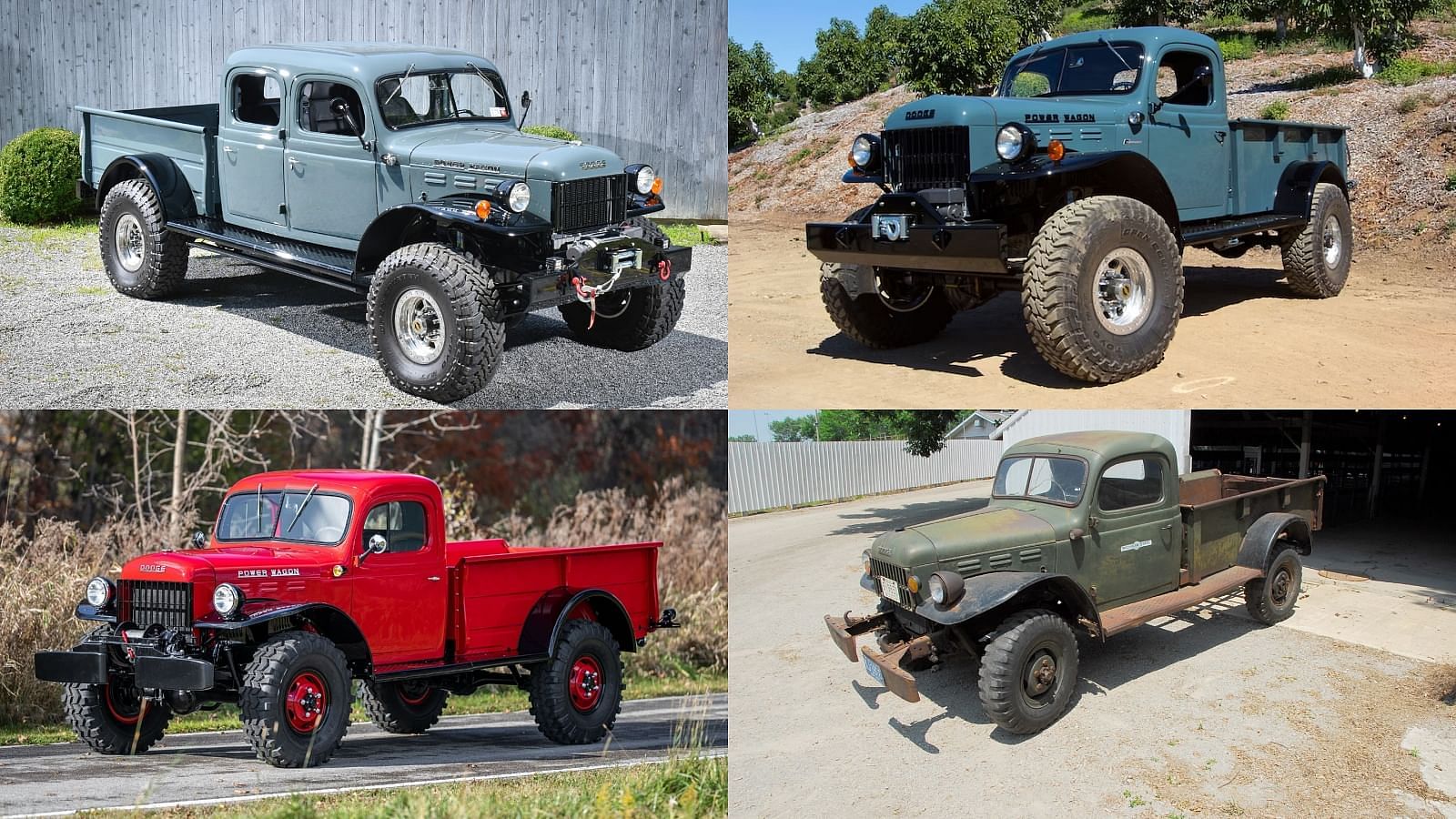
A Dodge-powered wagon grew out of World War II when it emerged as an army truck. Upon civil transition after the war, it was designed for the civilian services where its development was mainly influenced by its military service operations.
|
Specifications |
Value |
|---|---|
|
Price |
Approximately $1,627 (1945) |
|
Powertrain |
4.0L inline-6 Engine |
|
Horsepower |
94 HP |
|
Torque |
180 lb-ft |
|
Transmission |
4-speed manual |
|
0-60 mph |
19 seconds |
|
Top Speed (MPH) |
50 (approx) |
Unlike any other vehicle, the Dodge Power Wagon exhibited an impressive design, excellent off-road capability, and powerful performance. This enabled it to be a favorite among civilians and industrial users of the 1940s. Robustness and reliability were the two factors that shaped its initial design as a product of war. Post-war, they proved their value in construction, farming, and other difficult fields.
Chevrolet Advance Design (1947) (Shaping the Future of Pickup Trucks)
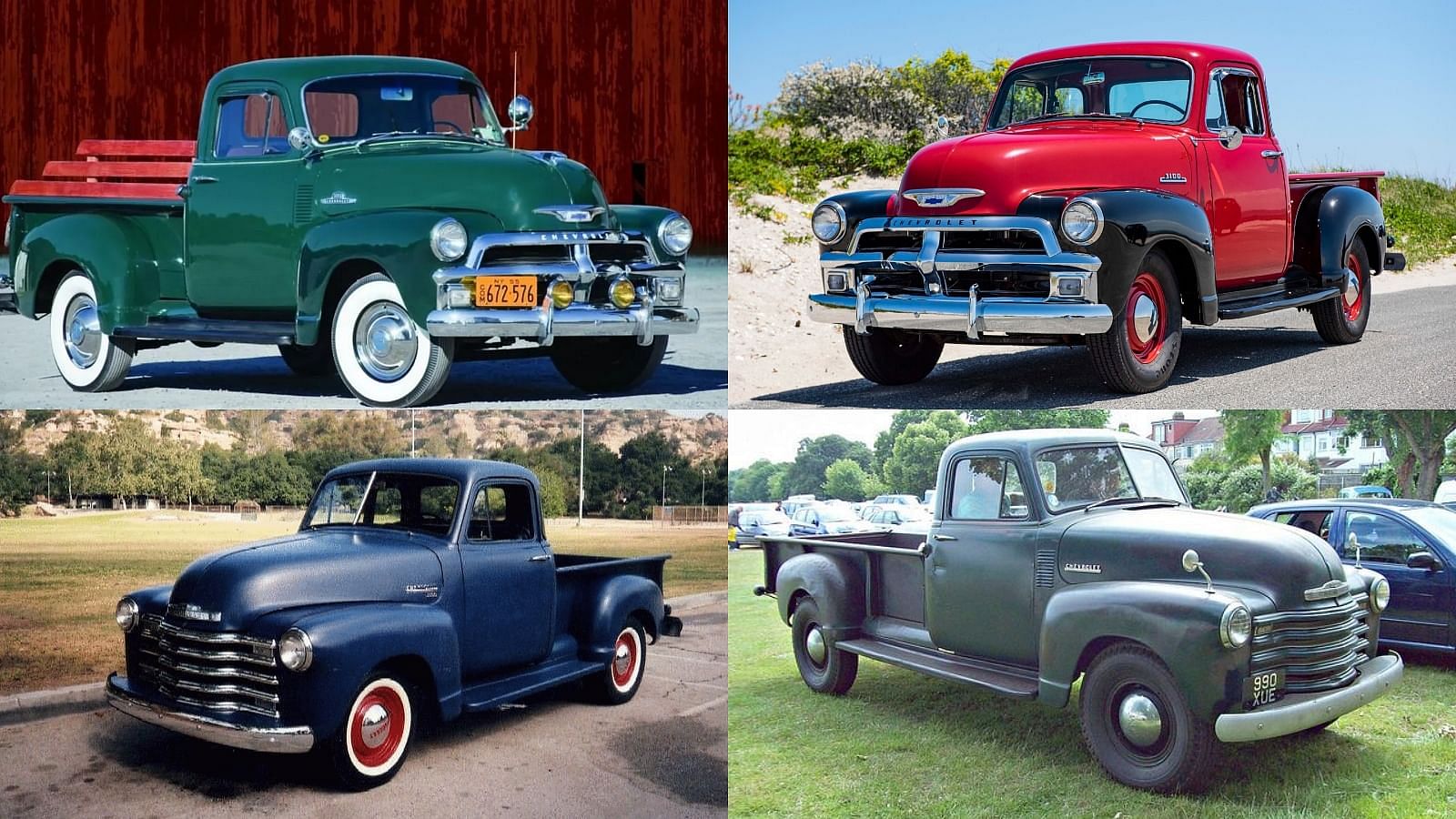
The Chevrolet Advance Design Series made it big as far as pickup trucks were concerned. The series included several trucks such that the 1947 model proved a benchmark for new truck design in the future.
|
Specifications |
Value |
|---|---|
|
Price |
Approximately $1,215 (1947) |
|
Powertrain |
Inline-6 Engine |
|
Horsepower |
90 HP |
|
Torque |
174 lb-ft |
|
Transmission |
3-speed manual |
|
0-60 mph |
22 seconds |
|
Top Speed (MPH) |
65 (approx) |
Known as the 1947 Chevrolet Advance Design because of its striking design, practical utility, and performance. The truck style satisfied the need for stylish but rugged products by the consumer at a time of peace after the war. After the war, customers were more interested in purchasing trucks as flexible commuting appliances instead of just rugged machines. This change in attitude was accurately represented by the Chevrolet Advance Design series.
Willys-Overland Jeep (1947) (From Military Marvel to Iconic Civilian Vehicle)

The story behind the Willys-Overland Jeep is interesting. Designed initially for army purposes, this small truck later turned out into a symbol of a civil vehicle.
|
Specifications |
Value |
|---|---|
|
Price |
Approximately $1,320 (1947) |
|
Powertrain |
Inline-4 Engine |
|
Horsepower |
60 HP |
|
Torque |
105 lb-ft |
|
Transmission |
3-speed manual |
|
0-60 mph |
27 seconds |
|
Top Speed (MPH) |
60 (approx) |
The popular features of the compact size, great performance in off-road areas, and simplicity of the design made the Willys-Overland Jeep so famous. This model became a favorite option among farmers, nature lovers, and all-terrain car seekers. Willys, also known as the Overland Jeep, established a high regard in the army after World War II. Many Americans loved this car because it was reliable in wartime, and dependable during peace times.
Studebaker M-Series (1941-1948) (Shaping the Pickup Truck Landscape)
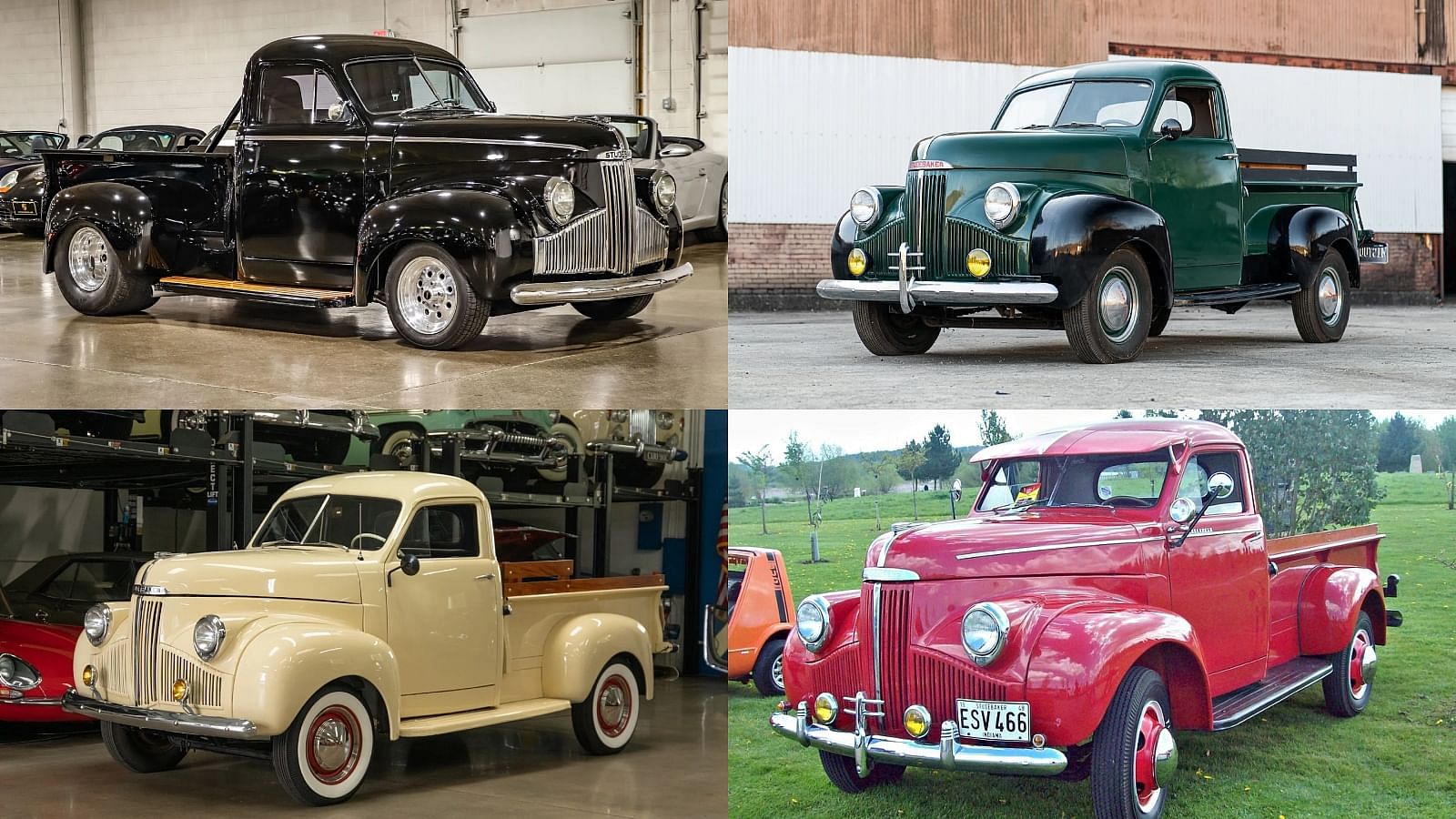
Studebaker was among the major competitors in the 1940’s pickup truck market. They left their footprints in the industry with their M-Series trucks.
|
Specifications |
Value |
|---|---|
|
Price |
Varies by model and year |
|
Powertrain |
Inline-6 or Inline-8 Engine |
|
Horsepower |
80 to 100+ HP (Inline-6) 100 to 120+ HP (Inline-8) |
|
Torque |
150 to 180 lb-ft (Inline-6) 180 to 220 lb-ft (Inline-8) |
|
Transmission |
3-speed manual |
|
0-60 mph |
15 to 20+ seconds (Inline-6) 12 to 18+ seconds (Inline-8) |
|
Top Speed (MPH) |
70-80 (Inline-6) 75-85 (Inline-8) |
There was a variety in the Studebaker M-Series – basic workhorses and much stronger models. The fact that their designs, the engine’s performance as well and the car’s durability made them preferred options for truck buyers. The famous M-series truck designs of Studebaker had its trademark “bullet nose” head end. The trucks also sported new suspensions, leading to improved maneuverability and an enjoyable ride.
GMC CCKW (1941-1945) (Transition from Military Hero to Versatile Civilian Workhorse)
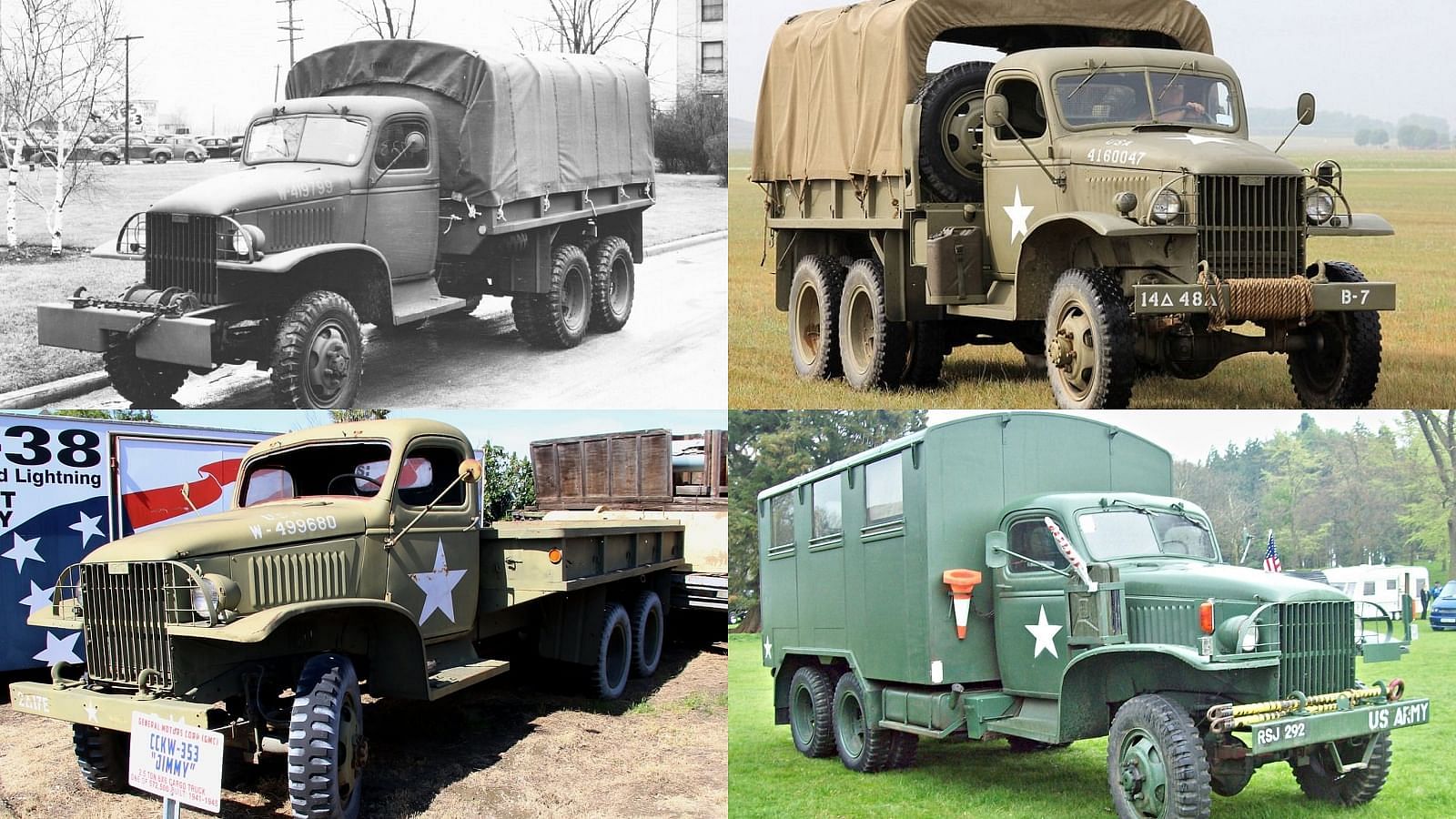
As a military vehicle, the GMC CCKW was of great importance during World War II. A multi-purpose workhorse that carried out various jobs.
|
Specifications |
Value |
|---|---|
|
Price |
Varies by model and year |
|
Powertrain |
Inline-6 Engine |
|
Horsepower |
91-104 HP (Varies by model and engine) |
|
Torque |
205-370 lb-ft (Varies by model and engine) |
|
Transmission |
4-speed manual |
|
0-60 mph |
Varies by model and engine |
|
Top Speed |
Varies by model and engine |
Some of these surplus military CCKW truck was converted for the civilians after the war. Their durability was tested on several occasions both in the agricultural and construction sectors. Its versatility was evident in the way it transformed from military equipment into civil goods. These modified trucks could do anything from hauling logs to clearing snowfields, showing their flexibility and toughness.
Conclusion
In summary, these pickup trucks were more than their mere transportation, as they represented the strength and flexibility of a generation that undertook a revolutionary period. Their service in the post-war economy will remain remarkable and a notable milestone in today’s automotive industries. This includes a review of the Ford F-series, Dodge power wagon, Chevrolet advance design, Willis-overland Jeep, Studebaker M-series, and, GMC CCKW among others.
These iconic vehicles remind us of a lasting memory of pickup trucks and how the innovations and flexibility of the 20th century still affect the designing process of today’s pickup trucks. It is refreshing to look back to the origins of a pickup truck which stands for such qualities as hard work, reliability, and American genius in a modern age of technology and change. Let us remember that these are iconic products that have played a major role in modernizing pickups into our everyday transport vehicles we reliant on today.
Write a comment
Comments
No Comments Yet







